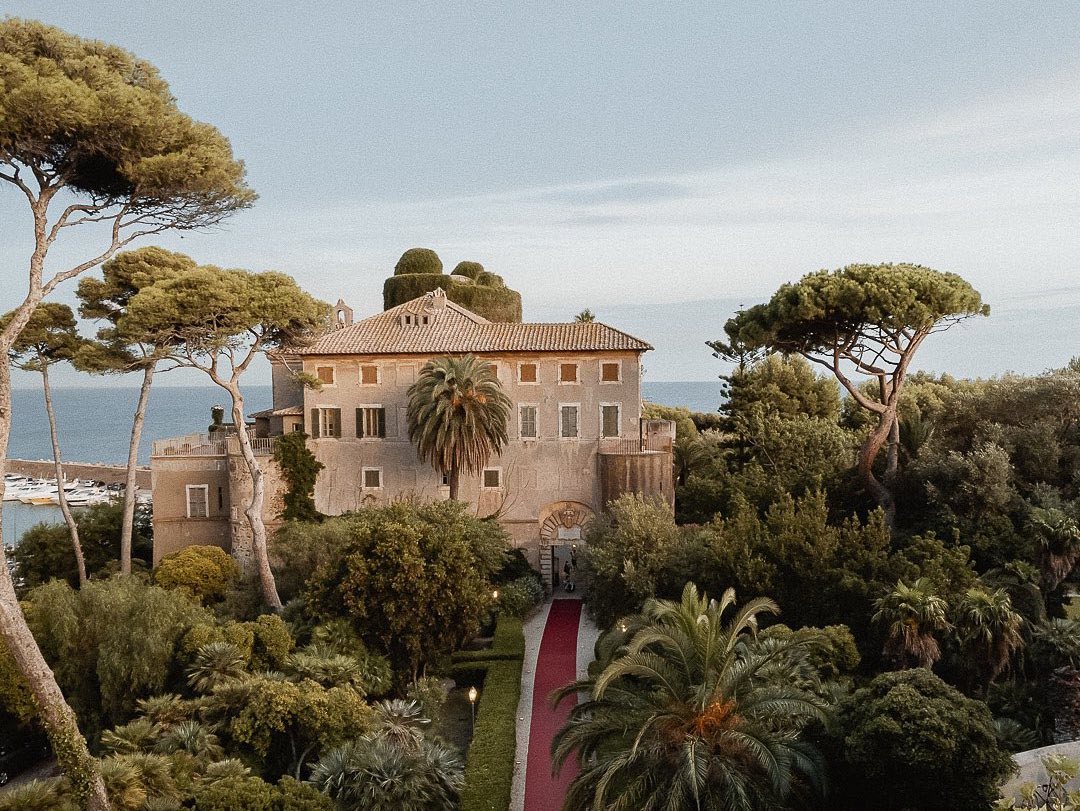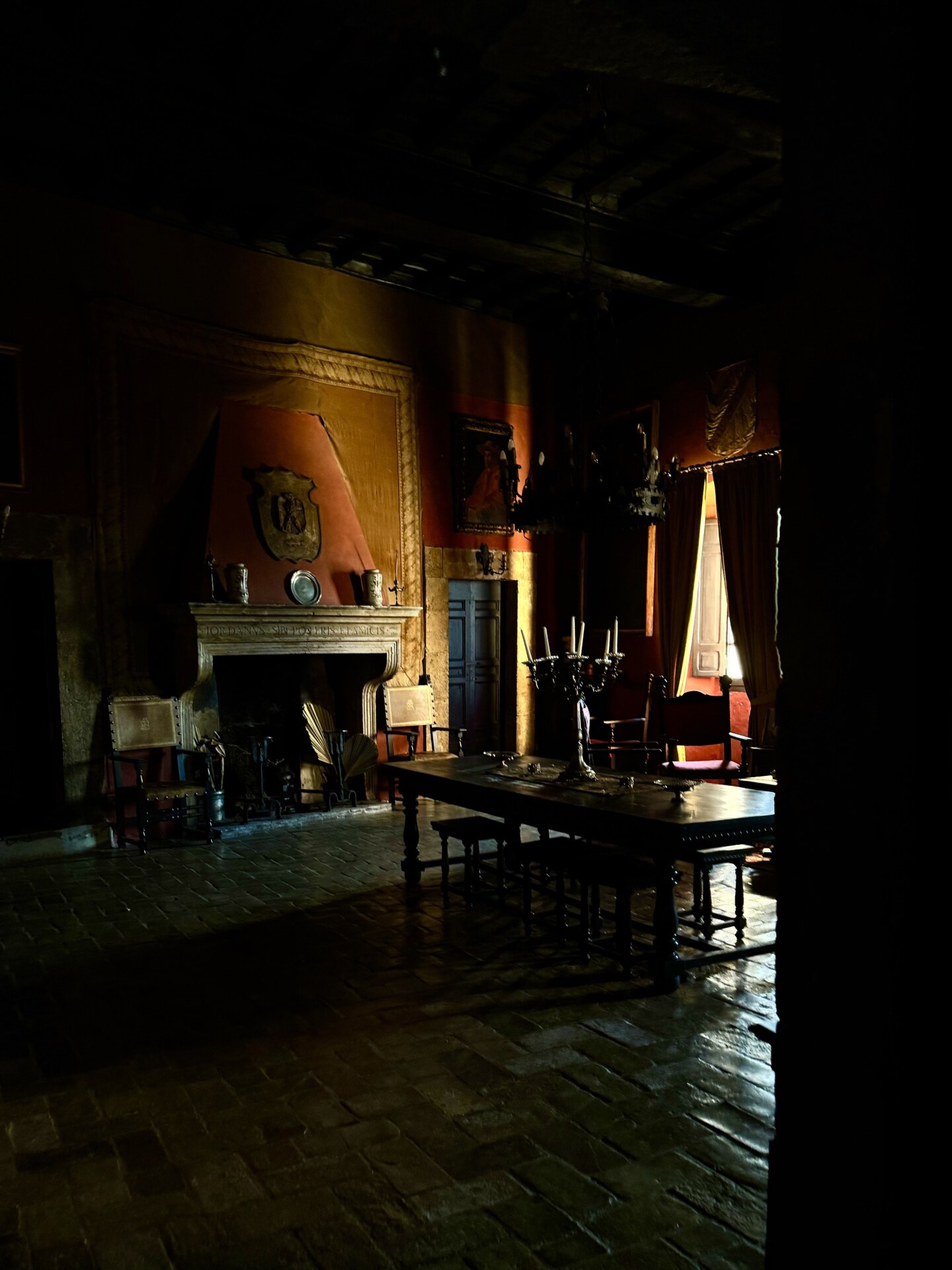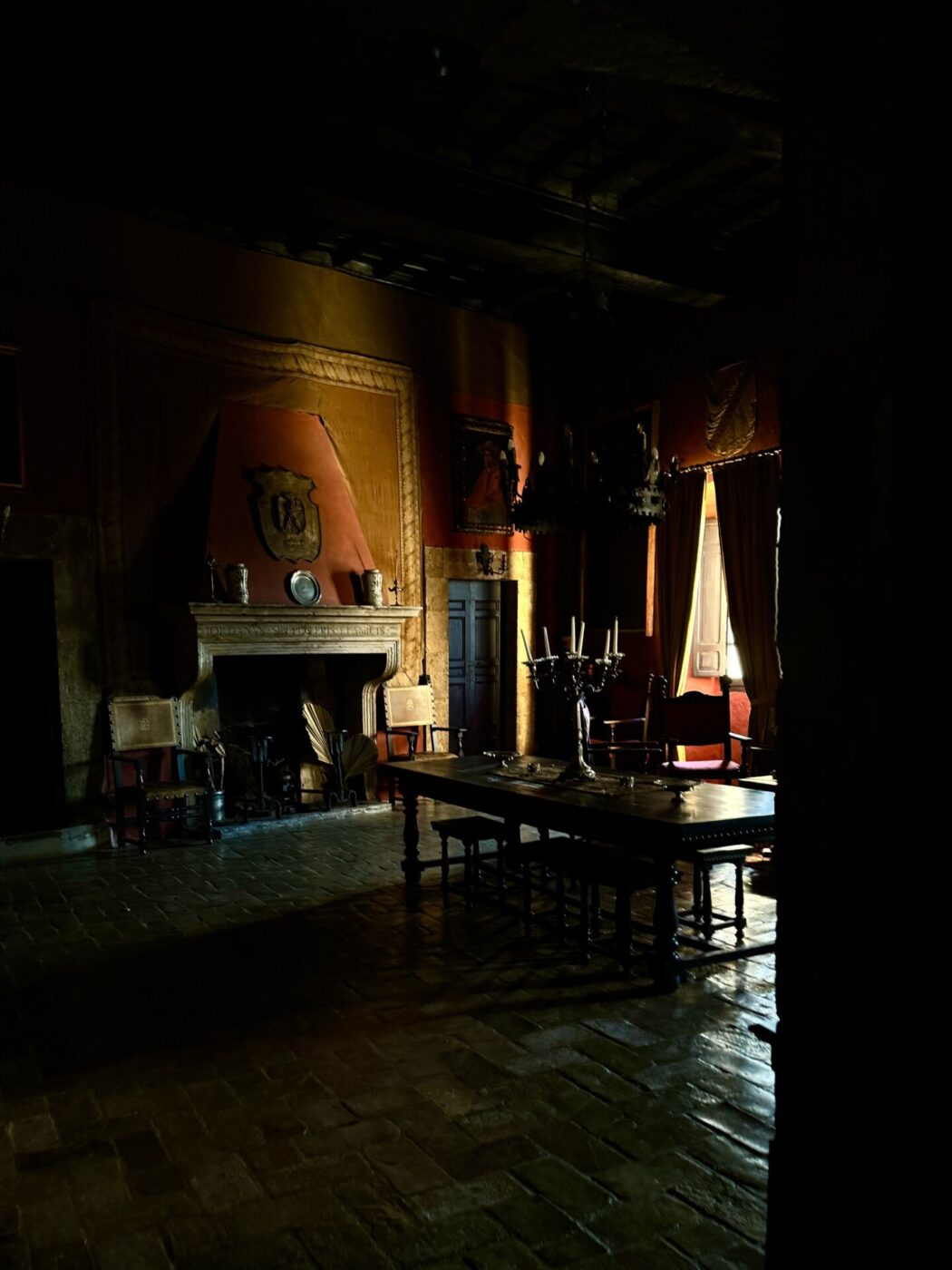It is perhaps the most famous line of Il Gattopardo, the Tomasi di Lampedusa classic that details the end of an independent Sicily and, to some extent, the end of Italy’s nobility—“Se vogliamo che tutto rimanga com’e’, bisogna che tutto cambi.” (“If we want everything to stay as it is, everything has to change.”)
–––––––––––––––––––––
Italy officially became a republic in 1946, marking the dissolution of the monarchy–although at 12.6 million to 10.7 million, the vote was close. The Italian government allowed nobility to keep their titles, but, by political standards, they were rendered largely powerless.
What it means to descend from Italian nobility in 2024 is a complicated question. We may imagine endless black tie balls, front-row seats at Fashion Week shows, an instant ticket to the highest-paid jobs and the most luxurious homes. We may think of opulent castles, sumptuous clothes, and a guest list plucked straight from the society pages. But that is largely a dream of a bygone era, and, for many aristocratic families, that in no way resembles their daily life.
In today’s Italy, nobility no longer means assured, eternal wealth—and it sometimes no longer even means a palace, villa, castle, or simply family residence to call your own. While many noble families still retain at least one of their family homes, based on anecdotal evidence, they often have to find a way to sustain that venture economically, be that renting it out as a venue, organizing paid excursions, or turning it into a hotel.
Not all families have that luxury. In 2015, Dimitri Corti, founder of Italian luxury real estate company Lionard, told The New York Times that the Italian market was “mostly historical—mansions pass from generation to generation.” At that time, the majority of the company’s sellers were Italian while its buyers were from abroad.
Trying to retain the family property—especially when other members are working against you—is a difficult business. The Texas-born Princess Rita Boncompagni Ludovisi struggled for years to stay in her late husband’s 16th-century Villa Aurora in Rome—until it was sold. In April, she tweeted that she had been officially evicted through a court order by a Roman judge following an inheritance dispute between her and her husband’s children. It is perhaps just one of the most public disputes of this nature.
But for the members of nobility that Italy Segreta interviewed, many with the titles of prince and princess, nobility is as much of a blessing as it is a curse, a sentence that hangs over the head, an honor, and a lifelong responsibility.
32-year-old Sofia Odescalchi, from Rome, is one of these “royals,” a princess by title related to Pope Innocenzo XI, who held the Catholic Church’s top role from 1676 until 1689. When she was 12 years old, she remembers a “really political” teacher at her school asking about her parents. It was one of the first times she really had to grapple with the difference between how she perceived her private life and how the world perceived her.
“When I was young, I realized that it was something I didn’t know about myself that others knew better than me,” Odescalchi said. “…My last name has allowed me to work in television and brought me much interest, but on my end, it has never been satisfied—it’s more something for show.”

Sofia Odescalchi
Still, there is one very tangible, very physical aspect of her name that will at some point become her responsibility when her father turns it over to her: Castello Odescalschi di Santa Marinella—not to be confused with that of Bracciano, which is her aunt’s. Her brother will have land near Bracciano. Overlooking the cerulean sea, the castle’s walled garden and turreted exterior charms even from the train ride from Rome. But its very location and prominence make its caretaking more complicated. Odescalchi’s father has always warned her not to get her hopes up. She has many ideas for what the castle could become, perhaps a studio in which she could teach pilates or a catering business to go with its role as an event venue, but her father’s words always live in the back of her mind.
“On the one hand, there’s a real love that you have for this place, this refuge at Santa Marinella,” Odescalchi said. “I’m really fond of it. I’d prefer to cut off my fingers than abandon it. But we’ve been renting it out for weddings for two years, and the money is simply not enough—in part because the venue rental is the least expensive thing.”
Perhaps Odescalchi can’t fully separate herself from the castle, and the possible dreams it holds, because of her own childhood memories. For her 18th birthday, the princess hosted a 500-person pirate-themed party there, complete with fake pirate ships and prop money. She calls it the moment in which she “committed herself” to the castle’s survival.
But that party has remained perhaps as a semblance of the past, the noble life she might have had–if she’d been born in the 1400s. She teaches pilates, she tells me, in a studio near Parioli, “to help me understand” her lifestyle. Her business sense tells her that organizing an internal catering system may be a way to earn extended income from the property, so she’ll spend her summer going to weddings and doing research.
“I have so much energy, and I don’t want to leave [the castle] on its own. More than anything, it’s something I find myself compelled to do. If I weren’t brave, I’d certainly be depressed,” Odescalchi said. “…In some ways, we are the generation left with this important last name and with so much desire but without the possibility of maintaining it.”
That’s one of the reasons Turin’s Carola Bianco di San Secondo Biondi, daughter of Carlo Bianco, the Count of San Secondo, started lifestyle experience organization Welcome to the Castle in 2014. It was a way to both help the property owners of historical residences, particularly those in the smallest towns, and recount to foreigners the traditions and the histories of those areas. (A point of reference for Bianco di San Secondo Biondi at that time was “Downton Abbey”, of which she was a great fan—the show inspired her to find a way to introduce the traveling public to Italy’s own noble families.) As a descendant of nobility herself, Bianco di San Secondo Biondi understood the importance of keeping a family’s legacy alive. She still wears her family ring every day—out of affection, she says.
Her chief concern with the project has always been choosing the right properties—owners not looking simply to earn extra money but truly wanting to share the story of their homes. The organization’s top clients are, unsurprisingly, Americans. Featured properties are scattered all over the country, from Piedmont and Lombardy to Lazio and Puglia farther south.
“My generation of 1959-1960, we were still used to this lifestyle, spending summertime in the family house,” Bianco di San Secondo Biondi said. “Now my sons are happy to meet us in the countryside with their families, but they necessarily live in a more practical future. Due to this, I’ve split the house into a few apartments; you have to have the courage to update.”
The problem in Italy, she says, is that the state does not aid historic homeowners in caring for their property. In France, for example, castle owners in protected areas can deduct up to 30% of the cost of restoration work from their taxes, per real estate agency Engel & Völkers. Owners who register their property as a historic building can receive even more benefits, from public subsidies to the deduction of land charges.
But not every noble family can be so lucky as to retain their family residences, even if their history is storied and prominent. In Sicily, the Alliata di Villafranca family has a name that remains on one of Palermo’s grandest palaces, which hosts an art collection including “The Crucifixion” by Anthony Van Dyck. The family hails from a prominent branch from Pisa that moved to Palermo in the Middle Ages. Perhaps especially at that time, the difference between Pisa and Palermo was vast. Sicily was a melting pot of Italian culture, Arab culture, of writers and poets, said Gabriele Alliata di Villafranca, the line’s 16th prince. Upon their arrival,they saw an astute business opportunity and began to buy up land, in particular near Palermo. Through marriage and political savvy, the Alliata di Villafranca family achieved even more power, with Spain’s King Philip III even bestowing the title of Prince in 1610. In the early 1800s, Giuseppe Alliata started the Sicilian wine Corvo by purveyor Duca di Salaparuta, still in existence today. The legacy left an indelible impression on 68-year-old Gabriele Alliata di Villafranca, who was raised thinking that he would one day take care of Palermo’s grand palace… only to find that his aunt had left the house to the Church.

Maria Josè Alliata, photographed by Roselena Ramistella
“I grew up with the idea that I would have to oversee my family’s affairs, with Palazzo Alliata di Villafranca as a life mission, not as something enjoyable but as an obligation as the family’s eldest son,” said Gabriele Alliata di Villafranca. “You are at the service of the house and the family your whole life. But when my aunt left the house to the Church, I was left from one day to the next with the education of a missionary without the mission.”
The property that remains in the family is an elegant but tranquil estate with two pools, a garden, and a view of Mount Etna in the lush countryside near Taormina, which the prince has turned into residences for rent. (A stay at the entire villa in early April could cost as much as roughly €3,300 for a four-night stay, according to Booking.com.) For his daughter, Maria Josè, the family name is something to be proud of, “a wonderful history,” but not necessarily a title that has automatically opened any doors.
And for most of the nobles interviewed for this piece, being born into aristocracy usually comes with an “a-ha” moment in childhood, during which you realize you’re different from everyone else. For Gabriele Alliata di Villafranca, that happened when a teacher asked the class about their fathers’ jobs. He came to school the next day with his answer: his father was a farmer. But for his teacher, who knew of his title, that answer didn’t quite suffice.
In Sofia Odescalchi’s eyes, the jokes will always remain; it’s her reaction that’s changed.
“I’m a humble person,” she said. “I know how to cook, how to clean. I used to want to show that I’m not spoiled—I would get worked up. Now I’m able to let it go a little more, but there are always jokes like, ‘Are you going to go sleep in the castle?’”



